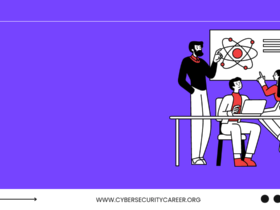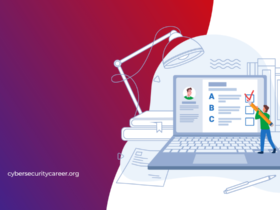Transportation industry’ increasing reliance on digital systems creates more entryways for hackers. Therefore, taking a risk-first approach and instilling strong cyber security practices are vitally important.
Attacks involving trucks, trains, or planes have the ability to significantly disrupt our society’s ability to function, making a sound plan your best protection.
Trucking & Logistics Companies
Companies reliant on delivery are at particular risk from cybersecurity attacks. Delays caused by these cyber attacks could cost companies millions in lost revenue; moreover, they expose sensitive data that undermines trust between customers and business partners. Trucking and logistics groups can take steps to minimize their risk.
Trucking and logistics companies have increasingly turned to technology in order to enhance their business operations, such as GPS tracking shipments or digitally tracking inventory. While this technology may bring great efficiency gains for companies, it also introduces vulnerabilities. As many technologies are interlinked creating an open attack surface which could be exploited by hackers.
As these systems tend to rely on old and outdated software programs that were not originally intended with cybersecurity in mind, these vulnerabilities may result in devastating cyberattacks that threaten their operation and compromise it entirely.
Transportation systems must prioritize cybersecurity as an essential aspect of their operation, with IT departments shifting away from supporting legacy systems in favor of developing an expansive security framework and training and awareness programs for employees. Since many attacks start by clicking phishing emails, educating employees to recognize telltale signs is vital in protecting systems against malicious attacks.
Transportation entities should develop an incident response capability with tested plans to ensure fast responses when incidents arise. As threats evolve, including cybersecurity into existing policies and procedures can help organizations to manage risks effectively and remain safe. Transportation has always prioritized safety and security measures; infusing them into their mission will make meeting new federal cyber initiatives much simpler for companies.
Passenger Transportation Companies
As their name suggests, passenger transportation companies focus on safely transporting both passengers and cargo. Cyberattacks pose risks similar to other industries in terms of disrupting service and revealing sensitive data; however, in this industry cyberattacks pose even greater threats as these systems operate interdependently that could potentially cause accidents, injuries or even fatalities. Many transportation agencies use outdated infrastructure installed decades ago with little thought given to cybersecurity, with new technology often implemented for efficiency rather than to prevent breaches or data theft.
Vulnerabilities create major issues. A recent report demonstrated this fact when ransomware emerged as the top attack type against the transportation industry in 2022. Additional threats include breaches and leaks that expose credentials, personal information and intellectual property.
One effective strategy to combat vulnerabilities is the implementation of a zero trust model. This means securing all aspects of a network and only permitting those with valid credentials access critical data, using multifactor authentication and least privilege as verification measures. In addition, security automation technology makes it more challenging for intruders to move throughout a network and access this sensitive information.
Transportation companies should create and deploy comprehensive incident response capabilities in order to quickly detect and disarm attacks before they cause harm. They should conduct risk analyses that identify their most sensitive information, then implement preventive practices like encrypting in transit data and using secure passwords as safeguards. Lastly, employees should receive ongoing cybersecurity training so they stay abreast of emerging risks and best practices.
With threats escalating and regulations expanding, transportation companies must reevaluate their cybersecurity posture to stay secure against evolving threats and stay compliant with regulations while mitigating cyberthreats, staying compliant, and mitigating any financial impacts from attacks.
Automated Vehicles
As transportation technology shifts towards fully autonomous vehicles, new security challenges arise. Connected systems that rely on communication links could become vulnerable to cyber attacks that have catastrophic outcomes. Therefore, it’s imperative that cybersecurity principles be integrated from design stage through implementation and operations using collaborative governance models that help manage risk effectively.
2015 marked the first major automotive cyberattack to make headlines when researchers from University of California at Berkeley successfully broke into an electric Jeep and gained control of its steering, transmission, and brakes – shocking auto industry executives into taking cybersecurity more seriously and prompting many firms to invest more heavily.
This increased emphasis on cybersecurity has spurred investment in data analytics and threat intelligence tools, but has put some transportation agencies into an awkward situation. Operating smaller transit vehicles with limited resources makes balancing security costs with other mission-critical needs difficult.
Transportation agencies traditionally prioritized safety as a top priority, yet with federal funding sources and regulations shifting constantly, they must now find ways to integrate effective cybersecurity protections while still allowing their vehicles and services to run seamlessly.
As more vehicles connect, they will exchange massive amounts of data among themselves and with road infrastructure such as traffic signal controllers, GPS devices and public WiFi hotspots. Unfortunately, this leaves vehicles vulnerable to attacks that could compromise vehicle performance and passenger safety; it is therefore vitally important that a cybersecurity strategy includes both data analytics and threat intelligence as well as automation that allows machines to complete tasks more rapidly than humans analysts.
As vehicles’ digital communications are more predictable than typical computer networks, it can often be easier to recognize and respond to anomalous behavior. Common threats against vehicles include “Message Spoofing,” Response Collision attacks that exploit error handling mechanisms and Header Collision attacks (spoofing a header that triggers responses in an unexpected way). Thus it is vital that vehicle manufacturers implement defenses against cyberattacks to keep the communication channels safe from cyber attacks.
Public Transit
Many transportation systems were established decades ago with little thought given to cybersecurity, creating vulnerabilities that can result in service interruptions and exposure of sensitive information. All transportation companies should invest in a robust security system capable of detecting threats before they impact operations.
Training staff on the importance and implementation of cyber security, protecting data and equipment from breaches and how to respond should one occur is also vitally important – which means offering them an NCSC-certified cyber incident response course as part of this training regimen.
Transit agencies can enhance their network security by adopting a Zero Trust model of network traffic distribution. This model divides network traffic into two streams, enabling agencies to easily identify where critical data resides and which hardware connects it. Furthermore, this strategy makes it harder for hackers to traverse through the network by restricting them access to devices that don’t belong on an approved list.
Public transportation agencies can enhance security through cloud infrastructure. It’s more cost-effective than maintaining on-premise servers and can reduce attack surfaces by restricting physical hardware access. Even with these measures in place, public transportation agencies must remain vigilant in assessing their vulnerabilities and working with third-party vendors to maintain integrity within their systems.
Data-related threats target IT systems to gain customer and employee data as well as proprietary information. Agencies should establish an effective vendor management program to ensure compliance with regulatory cyber standards such as Payment Card Industry Data Security Standard and Systems and Organization Controls 2.
As part of an overall security plan, transit agencies should perform frequent risk assessments. This involves inventorying all systems and identifying any entryways for hackers; additionally this process helps transit agencies determine which assets and systems may be the most vulnerable and prioritize security efforts accordingly.
As APTA members modernize their transportation systems, cybersecurity must become a top priority in procurement and project planning. The bipartisan Infrastructure Investment and Jobs Act has made funding available to encourage this effort and agencies are encouraged to integrate cybersecurity considerations at every stage of modernization from planning through design to implementation.









